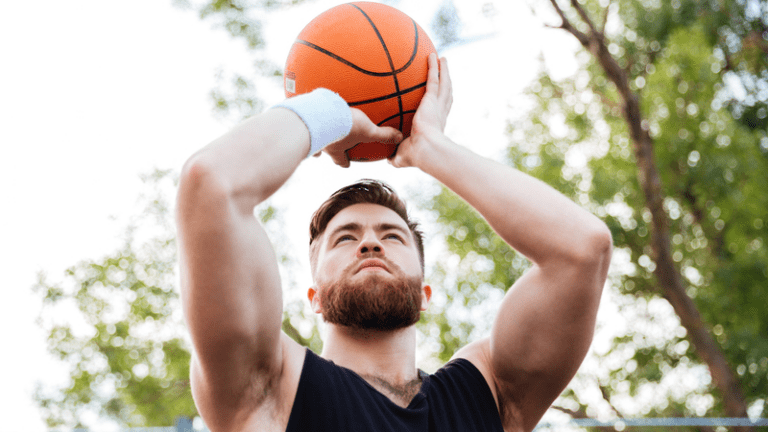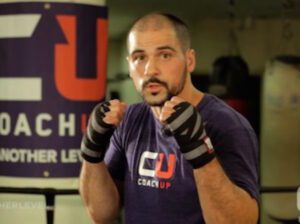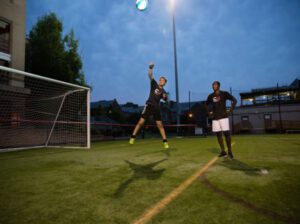Everyone procrastinates at some point, and teenagers can be especially guilty. Waiting until the last minute to do homework or write a paper, for example, is a common behavior of many teens. But when it comes to determining which college you’ll attend, waiting until the last minute could cost you.
My article called The Dangers of Being Unprepared relates to this situation. Taking the necessary steps prior to high school graduation and being proactive can keep you ahead of the game for your collegiate education and athletic career.
The Truth About D1 Scholarships
While most athletes dream of receiving a full-ride scholarship and playing for a Division 1 program, the chances of receiving this level scholarship is very slim. One of the main reasons is the limited amount of scholarships available per team per year.
In 2016, it was reported that there were 351 NCAA D1 schools, 541,479 high school students who played basketball, and on average, D1 NCAA schools provided 13 basketball scholarships per year.
That means there is a 1% chance for a high school player to receive a basketball scholarship at a D1 NCAA school. Click here for more information related to these stats.
Early Preparation, Identification, and Determination
Of course you should strive for a D1 scholarship if that is your goal, but with your determination must come early preparation on and off the court.
Below, I’ve listed four “Player Level” categories. Knowing where you are within these categories early in your career can help increase chances at receiving any basketball scholarship, not just a D1 scholarship.
- The Good Sportsman: The athlete that shows up to every practice and game, is a good practice player and helps the team get better but doesn’t receive much playing time
- Spot Minute Player: The athlete that works hard in practice, is a contributor, and receives spot minutes to help the team
- Rotation Player: The athlete that is a major contributor, plays more minutes than the spot minute player, does his job well, and occasionally starts but has the potential to be a consistent starter
- The Starter: The athlete that is one of the main contributors, has a particular skill or ability that gives them an advantage at starting most of the time.
What category do you land in? Understanding your role early on will help you in moving up to the next level. This identification process is needed for self-awareness and for evaluating what you need to do to move to the next level. I’ll elaborate on how to do that more below.
Good Sportsman
For some Good Sportsmen, being on the team is enough. If they’re looking for a scholarship, they may be taking the academic route. For others, the desire for an athletic scholarship and playing at the next level is much stronger.
Improvement options for the Good Sportsman:
Work with the coach to understand what needs to happen for more playing time and work towards that goal before senior year. Be open to receiving constructive criticism from your coach and be willing to apply it to your training. This insight and application could potentially change your player level and make athletic scholarships become achievable for you. Find extra time with a trainer or mentor to build on your weaknesses. Even if a scholarship doesn’t happen for you, it could still lead to walk-on opportunities.
Spot Minute Player
The Spot Minute Player is in a little better position—you have minimum opportunity to showcase your ability, but your team counts on you to contribute when needed. The coach has trust and faith to place you on the court for X amount of minutes. Moving into the next player level is less difficult than for the Good Sportsman, and receiving an athletic scholarship is more achievable, but at a level that fits your current abilities and skill.
Improvement for the Spot Minute Player:
Enhance your current strengths and devote time to strengthening your weaknesses and developing new skills. You’ll need to bring something new to the table to up the minutes you’re seeing on the court. New skills can lead you to coming in for multiple players and to receiving additional time on the court. New skills will not only enhance your game, but can bring life to your team’s game as a whole, and in turn, this means more opportunities for colleges recruiters to see you.
Rotation Player
Let me start by saying that the fact that you do not start does not mean you can’t receive the athletic scholarship you want. The Rotation Player mostly has or will have a higher chance at receiving an athletic scholarship than the Good Sportsman and the Spot Minute Player. You will play in most games, and have the opportunity to contribute just as much as a starter. You have the ability to impact the game and show your team, scouts and coaches that you can play at the next level.
Improvement option for the Rotation Player:
Talk to the coach and understand the path to becoming a starter. Take that feedback or advice and implement it in practice and games. Make the most out of time on the floor and be effective. Decrease your turnovers, which can lead to extra playing time. Build on your skills and utilize them wisely during playing time. This can move you into the next player level and/or catch the eyes of recruiters who may be looking for the next best thing to a starter.
The Starter
The Starter is in a good position to receive a basketball scholarship, but should not be taken lightly or for granted. All the other player levels behind you are working to reach the Starter Level. The coach has his reasons for making you a starter, so living up to those are critical. You have the ability to catch attention from teams, coaches, scouts, crowds and media. Though other player levels have their chances as well, the light shines brighter for starters.
Improvement options for the Starter Player:
Understand that being a starter is not enough. Work on your weaknesses and start to understand basketball the way your coaches do. Make your teammates around you better and become a leader. Be consistent, play hard every game, and show good sportsmanship! These actions can increase the quality of athletic scholarships.
Additional Outlets to Pursue or Investigate
Often, basketball careers don’t happen the way we’d like them to. When college scholarships are at minimum and time plays a major part in decision making, exploring other options and extensive planning becomes critical.
Here are some tips (listed highly favorable to least favorable) that players can use to increase their chances of receiving a basketball scholarship (at all levels—not just D1 NCAA) or just for playing college basketball in general:
- Always ensure your grades are great! You should maintain at least a B average or better to receive an academic scholarship. This can help get into a college and walk-on if needed.
- Consistently research schools. Stay proactive early in your basketball career. Determine the academic strengths and weaknesses of schools. This could help make a better sound decision.
- Start composing highlight footage early in your career. This opens up the option to send coaches (even those who have never heard of you) various clips, especially if your school investigation led to an out-of-state school. Also, highlight film can benefit in evaluating your skills and progression over the years.
- Pursue NAIA schools. Don’t write off the NAIA. Look at the schools who are top in conference and play at the caliber of an NCAA school.
- Set up tryouts or visits. Connect with schools you are interested in or that have showed interest in you. This can give a chance to put your skills and abilities to the test with real college players.
- Pursue lower division and junior colleges. Having a great GPA could help offset the athletic scholarship that some lower division (D3) schools cannot provide. The junior college route can provide more maturing time, for both skill development and academics. Furthermore, athletes have the transfer opportunity to a bigger school after a couple years.
Closing thoughts:
Work hard on and off the court earlier in your athletic career so that success can come easier in the future. Understand what your Player Level is and set a goal of where you want to be at the end of high school. Lastly, exercise all your options and try not to place all your eggs in one basketball.
How useful was this post?
Click on a star to rate it!
Average rating 0 / 5. Vote count: 0
No votes so far! Be the first to rate this post.



